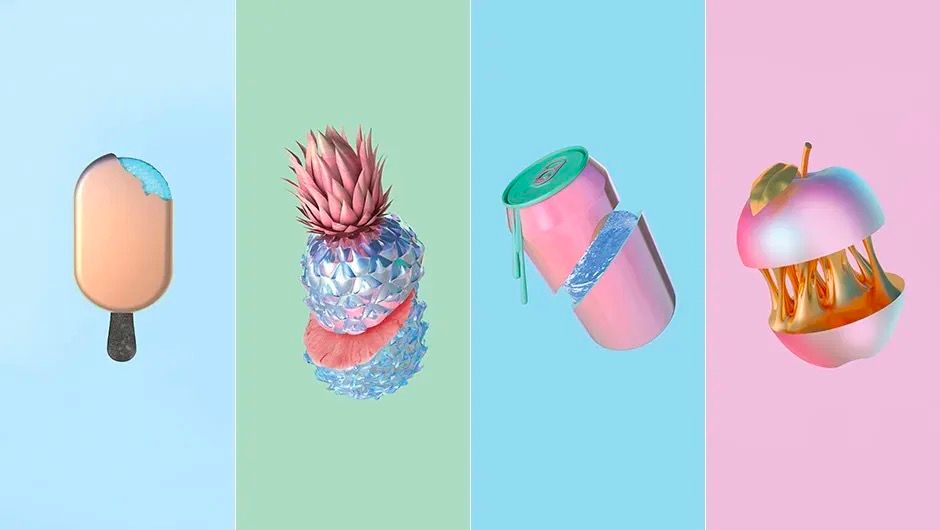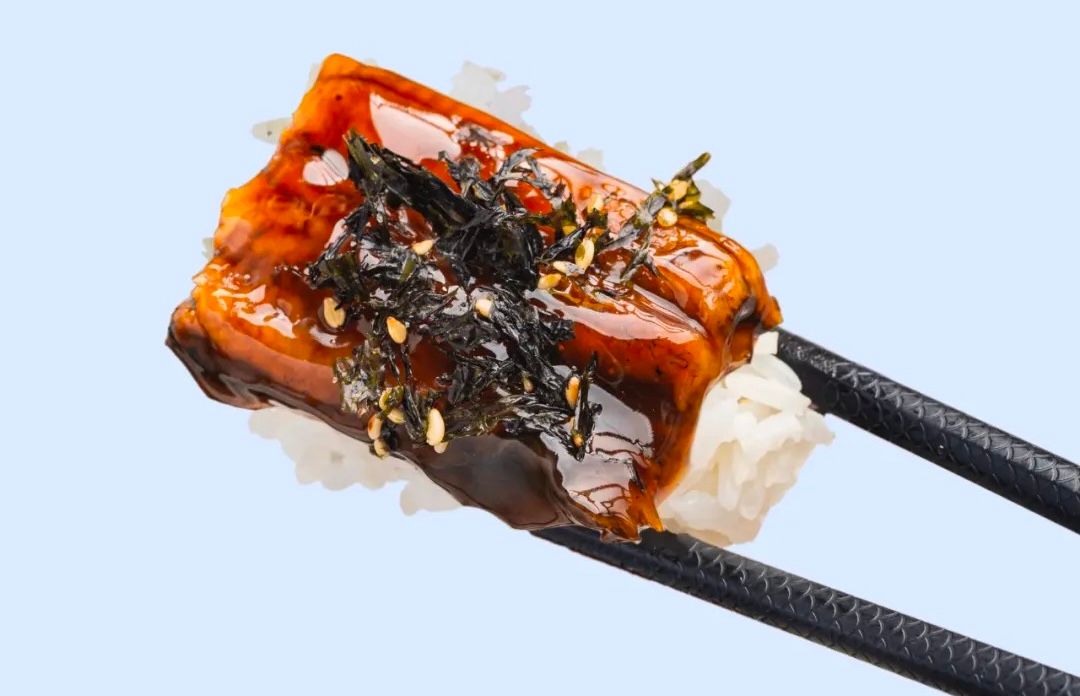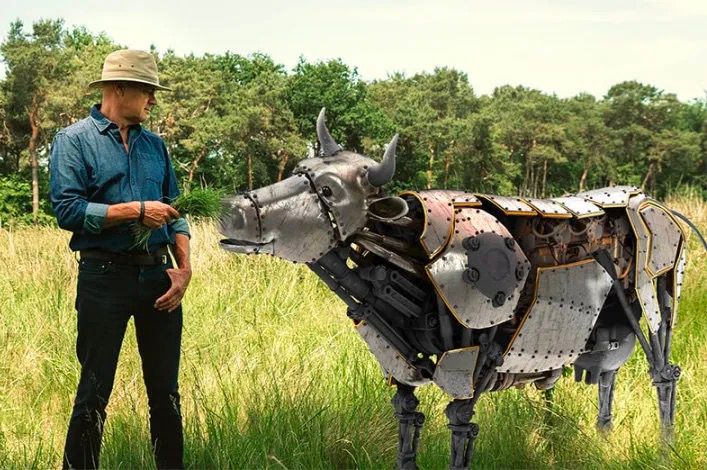How about trying some pink rice!
)
"Eating" has always been an eternal question for humanity. But now, the future of food is at an unprecedented and remarkable forefront—faced with over 8 billion hungry mouths globally, what new food solutions can satisfy us?
Rice, fish, milk—our conventional foods are all undergoing changes.

©The future of food: what we’ll eat in 2028BBC Science Focus
The issue of food always encompasses both the "human" and "social" aspects, and in the face of the future, new ideas about food may not be determined by taste or technology, but by what can sustain human survival.
The population continues to grow, yet resources are dwindling. While food production may not be an immediate concern, the problem of food distribution remains unresolved. Additionally, loss of biodiversity, water scarcity, soil degradation, and increasingly unpredictable climates all threaten global food security, prompting changes.
Scientists are continually seeking new ways to produce more sustainable food. From lab-grown meat to entirely new agricultural methods, these technologies are disrupting our perceptions of food and causing us to question what we're eating.
Although skepticism or even aversion to anything new or different is not uncommon, a certain degree of adventurous spirit will certainly come in handy in our future menu.
Pink Rice
With changes in dietary habits and nutritional awareness, more and more people are leaning towards a low-carb, high-protein diet. Imagine if there were a type of rice that could meet our need for high protein, taste like meat, and be pink, which is trendy nowadays?
Recently, researchers at Yonsei University in South Korea have developed a new type of "pink rice," incorporating beef cells, further enhancing the nutritional value of rice. Compared to regular rice, it has 8% higher protein content, 7% higher fat content, and a better chewy texture.
Hong Jinkee, the lead researcher of this study, tasted it firsthand. He described the rice, when cooked, as maintaining the appearance of traditional rice but having a unique blend of aromas, with not only the savory taste of meat but also a slight nutty flavor.
Professor Hong also mentioned that while pink rice cannot fully replicate the taste of beef, it provides a pleasant and novel flavor experience. They've tried various cooking methods, and pink rice pairs well with many dishes. He is confident about this rice.
Beef rice is actually cultivated in the lab. Researchers extracted muscle and fat cells from Hanwoo cattle and implanted them into rice. The rice was pre-coated with fish gelatin to help the cells adhere better, then cultured in a petri dish for 9 to 11 days, waiting for them to grow.
The production process of pink rice is relatively simple, with main components meeting food safety requirements and a low risk of causing food allergies. Therefore, the research team is optimistic about its commercial prospects.
Pink rice is not only rich in nutrients but also environmentally friendly. Humans mainly obtain protein from livestock, but raising livestock usually means consuming a lot of water and resources while emitting large amounts of greenhouse gases. Producing 100 grams of protein from beef releases 49.89 kilograms of carbon dioxide, but the carbon emissions from pink rice are much lower, only 6.27 kilograms of carbon dioxide.
Furthermore, pink rice is more affordable. If it enters the market, pink rice is estimated to cost around $2.23 per kilogram, much lower than the approximately $14.88 per kilogram of beef. In the future, researchers hope to use it to address famine, military rations, and even make space food. Pink rice is bound to provide a cheaper and more environmentally friendly source of protein.
The research team has seen endless possibilities for hybrid rice. They are exploring sustainable cell supplies and are committed to producing cells in the lab without the need to slaughter more animals. Future hybrid rice may have even more different meat flavors.
Eel Alternative
Today, in a Japanese department store, a combination of two grilled eels from Kyushu sells for as much as 6,190 yen. Due to overfishing, illegal trading, marine pollution, and habitat destruction from urban development, the global population of eels has sharply declined in recent decades, putting wild freshwater eels at risk of extinction.
The plump eel has become a heavy burden.
But now, the first lab-grown freshwater eel meat has emerged—Forsea Foods, an Israeli company, has successfully manufactured eel meat using embryo cells from freshwater eels and is expected to be on the market by 2025.

©Forsea Foods
Roee Nir, CEO of Forsea Foods, said they did their best to recreate the unique taste and nutritional value of eel meat, which is very tender, rich in fat, and has a unique fresh flavor. They also collaborated with Katsuo Motomasa, head chef of the famous Tokyo vegetarian restaurant Saido, to develop grilled eel rice and eel sushi, almost boldly challenging the most classic eel dishes with confidence.
As a startup, Forsea Foods has insightfully targeted endangered wild species, which are expensive in restaurants and markets, and the miraculous eel happens to meet both conditions.
Eels have survived on Earth for sixty to seventy million years, with a very complex life cycle, and there are still many mysteries about their ecology. Therefore, artificial breeding costs are very high, and the reproduction rate is not high. Humans have not yet found a cost-effective way to farm eels like other fish.
Forsea Foods' artificial eels are produced using "organ-like" technology, which uses stem cells to create organ-like structures, mimicking the natural growth process of cells, ultimately forming real meat structures.
Compared to other methods of cultivating artificial meat, this technology does not require the use of large amounts of growth factors and expensive cell growth scaffolds, making it particularly suitable for the production of fish and seafood because their meat is relatively uniform, unlike beef with fat distribution.
Forsea Foods is currently the only company using this technology to produce artificial meat. Their patent allows them to collect stem cells from fish without harming them.
Eels under pressure from overfishing may not be delicious, but if we pursue the taste and freshness of eels, choosing artificial eels may be a viable option because such production should better control the quality of the product. You can always eat delicious fish without reducing their numbers, so we can enjoy the delicious food without guilt.
Cyber Cheese
When you're drinking milk, just thinking about the methane released by cows is a major source of carbon emissions, no matter how sweet the milk may be, it may immediately lose its appeal. But the cow mom is not the culprit. In the industrialization process of modern dairy farming, it is just a small cog with no choice.
When a meat-loving farmer, Jaap Korteweg, met animal rights activist Niko Koffeman, Those Vegan Cowboys were born—real cowboys have a kind heart, and they want to liberate cows from the production chain.
After selling the plant-based meat brand The Vegetarian Butcher to Unilever, in 2020, the two reassembled into Those Vegan Cowboys. They used the funds to assemble a talented team of scientists and established a dairy lab in Ghent, Belgium, where they built a mechanical cow named after Margaret Thatcher.

Clearly, this lead cow was entrusted with the pioneering revolutionary spirit. As the first female Prime Minister of Britain, Margaret Thatcher expressed her steel-like will and vision for the future with "no alternative." And Margaret, as the first mechanical cow on the lowlands, conveys a message that is literally the opposite but equally hopeful for the future: "Another choice."
Compared with other alternative dairy products on the market, Margaret fits more into the contemporary context. It has a special "persona" and works very hard to make everyone eat cheese without using milk from beginning to end.
It uses microbes to make dairy products, a process similar to a large fermentation machine. First, the mechanical cow also needs to eat grass, put the grass in, and then the cheese comes out from the other end. The entire process is completed inside the mechanical cow, converting grass into casein using micro-precision fermentation technology, and using casein to make cheese.
Those Vegan Cowboys claim that the cheese produced by Margaret has the same taste and texture as real cheese, with the texture of regular cheese, soft, and elastic. They believe that with this technology, it is possible to produce any cheese in the future. Whether it's Gouda cheese, Cheddar cheese, or even Stilton blue cheese or Camembert cheese, they all start with casein.
Although we drink less milk, we eat more cheese. Not only because lactose intolerance becomes more common as we age, but also because choosing alternative dairy products expresses more concern for our health, the environment, and animal welfare—a round of plant-based cheese is a reflection of modern social values.
Now, we have almost all the alternatives ready. Food is prepared, are you ready?

